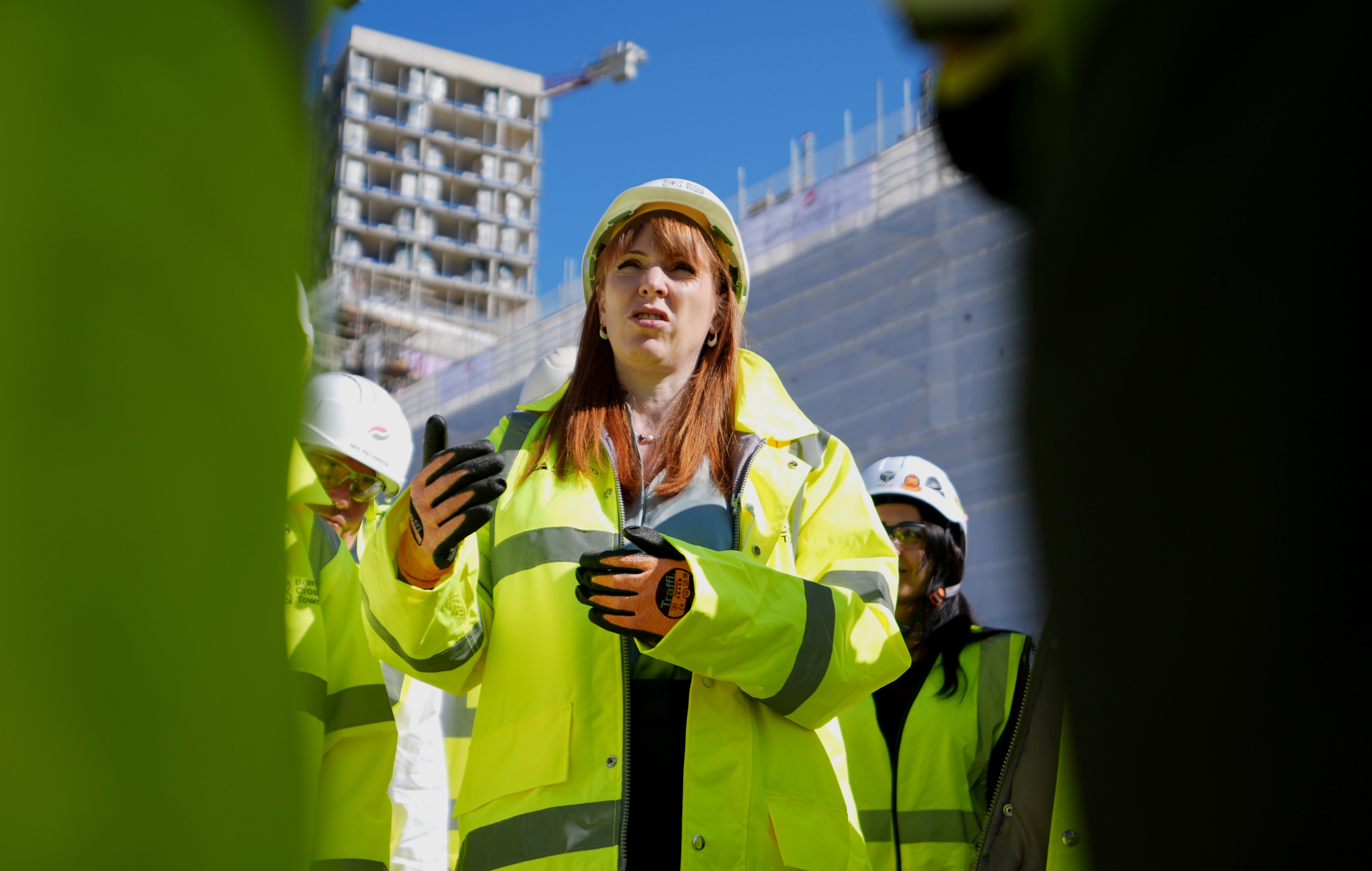If she ends the housing crisis, Rayner’s political legacy will be set in stone
Editorial: With her blueprint to ‘get Britain building’, the deputy prime minister hopes to alleviate an acute shortage that has defeated successive administrations – but developers could yet provide the blot on the landscape

It was a little odd, to say the least, that the first major announcement made by the Labour government on its housebuilding programme should have been made by the chancellor of the Exchequer, Rachel Reeves, rather than the minister actually responsible for making it happen, Angela Rayner.
No matter. The deputy prime minister and secretary of state for housing, communities and local government has had her day in the sun and, fair to say, delivered a more upbeat performance than Ms Reeves did the previous day when she had to cut the pensioner winter fuel allowance, the roads programme and the plan for social care, among other cherished goals.
Ms Rayner may yet have to make some tough choices, possibly imposed on her by Ms Reeves’s almost fanatical dedication to fiscal credibility – but for now, she is determined to “get Britain building”, as her latest slogan goes.
Next to Ms Reeves, and the prime minister himself, Ms Rayner has the toughest job in government, trying to build some 370,000 homes a year to meet the target of 1.5 million that Labour set itself in its manifesto. Let there be no doubt: one thousand houses or flats per day is a demanding target.
Difficult as cuts in social security, say, or paring the hospital building programme are, they can at least be directly controlled by a minister equipped with the necessary powers and a fresh and substantial majority in the House of Commons. Ms Rayner’s department doesn’t employ a single builder or own so much as a wheelbarrow, and her programme is heavily dependent on the cooperation of local authorities, the acquiescence of the courts on planning appeals, and the willingness of the property developers not just to construct new homes for profit, which they rather enjoy, but to also provide the necessary quota of affordable homes and contribution to the local infrastructure, which they find somewhat irksome.
If there is anyone in the present administration able to take on this particular “mission” with the zeal and energy required, then it is Ms Rayner. She has the advantage, albeit a perverse one, of taking charge of housing while the country is in what she rightly terms the “most acute housing crisis in living history”. So inured are the British to silly property values and sky-high rents that they need to be reminded that the housing market of today is not just socially indefensible but historically weird.
Not since the time of WE Gladstone’s premiership have homes been so expensive relative to incomes, and the very real hardship that has resulted should not – need not – be tolerated.
Housing was one of the main issues in the general election, and, as in so many areas, the electorate demanded change. That mandate and the weight of public opinion should strengthen Ms Rayner’s hand as she takes on the vested interests.
There is a clear public demand for better and more affordable homes, and it requires a radical change in the planning regulations. No one likes “top-down” housing targets but some local authorities have been so incalcitrant about creating realistic local plans that action by the centre has become essential – both in housing and in other crucial areas such as power lines, power stations and reservoirs. We cannot go on as we have been – or at least if we do, the absurdity of the housing market will grow ever more grotesque, stymying family life and GDP growth alike.
It is an unfortunate necessity that councils, who know their territory best, should be tasked with nominating where these hundreds of thousands of new abodes should be situated, and what infrastructure will be needed to support them: schools, GP surgeries, public transport and the like. In return, Ms Reeves will allow them new powers to use their right-to-buy receipts to build and buy more social homes, plus £450m of investment in the local authority housing fund to help create homes for families at risk of homelessness (thus far saved from Ms Reeves’s axe).
Yet Ms Reeves will still need to take care. She is right to put brownfield and “grey belt” development before any loss of genuinely green belt land is contemplated – and she needs to be extremely careful to prevent any unscrupulous developers or incompetent local planners from concreting over areas of genuine amenity.
Similarly, she really ought to think again about abandoning the factor of “beauty” in the new estates and new towns that Labour promises to leave as its lasting legacy. How many of the system-built high-rise blocks of 60 years ago have stood the test of time, either aesthetically or functionally? A whole generation suffered from that rush to build.
Ms Rayner should instead look to the post-war council housing standards laid down by Nye Bevan (his other great achievement) and build handsome homes with the gardens and interior space that families need. Beautiful need not be more expensive to build.
“Solving” the housing crisis is probably beyond any administration in one term of office but if Ms Rayner can somehow even ameliorate the current plight of renters and wannabe owner-occupiers, it will be one of the standout successes of this government. In such circumstances, she need never worry about her political status, her future or her political legacy.






Join our commenting forum
Join thought-provoking conversations, follow other Independent readers and see their replies
Comments